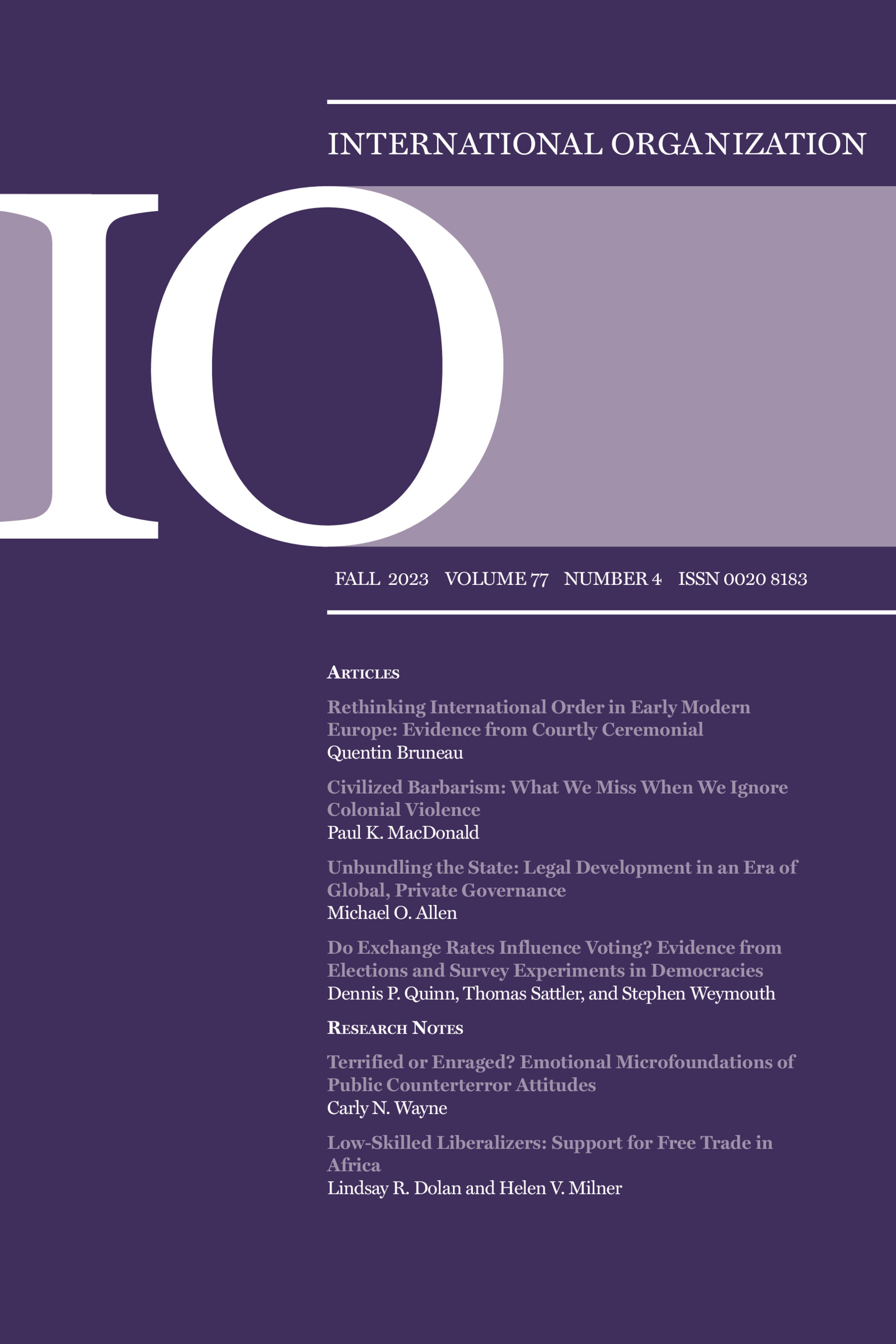无组织的政治暴力:温度和叛乱的示范案例
IF 4.5
1区 社会学
Q1 INTERNATIONAL RELATIONS
引用次数: 0
摘要
任何战场暴力行为都是组织战略和战斗人员个人动机共同作用的结果。为了衡量每种因素的相对贡献,我们的研究设计利用了环境温度对人类侵略的可预测影响。利用美军在阿富汗和伊拉克冲突期间收集的细粒度数据,我们测试了温度和暴力是否与单个战斗人员发起的袭击有关,而与那些需要组织协调的袭击无关。为了区分涉及温度对目标运动影响的其他解释,我们研究了目标静止的情况。我们发现,当个别战斗人员对暴力的发起有自由裁量权时,环境温度确实会影响战场结果。当需要组织协调时,就没有这种效果。在伊拉克冲突期间进行的一项调查中,我们还发现环境温度会影响战斗年龄男性对叛乱暴力的支持。我们的研究结果告诫人们不要将暴力归因于战略原因,并鼓励研究战略动机和个人动机在冲突中如何相互作用。本文章由计算机程序翻译,如有差异,请以英文原文为准。
Disorganized Political Violence: A Demonstration Case of Temperature and Insurgency
Abstract Any act of battlefield violence results from a combination of organizational strategy and a combatant's personal motives. To measure the relative contribution of each, our research design leverages the predictable effect of ambient temperature on human aggression. Using fine-grained data collected by US forces during the Afghanistan and Iraq conflicts, we test whether temperature and violence are linked for attacks that can be initiated by individual combatants, but not for those requiring organizational coordination. To distinguish alternative explanations involving temperature effects on target movements, we examine situations where targets are stationary. We find that when individual combatants have discretion over the initiation of violence, ambient temperature does shape battlefield outcomes. There is no such effect when organizational coordination is necessary. We also find that ambient temperature affects combat-age males’ endorsement of insurgent violence in a survey taken during the conflict in Iraq. Our findings caution against attributing strategic causes to violence and encourage research into how strategic and individual-level motivations interact in conflict.
求助全文
通过发布文献求助,成功后即可免费获取论文全文。
去求助
来源期刊

International Organization
Multiple-
CiteScore
14.50
自引率
1.30%
发文量
25
期刊介绍:
International Organization (IO) is a prominent peer-reviewed journal that comprehensively covers the field of international affairs. Its subject areas encompass foreign policies, international relations, political economy, security policies, environmental disputes, regional integration, alliance patterns, conflict resolution, economic development, and international capital movements. Continuously ranked among the top journals in the field, IO does not publish book reviews but instead features high-quality review essays that survey new developments, synthesize important ideas, and address key issues for future scholarship.
 求助内容:
求助内容: 应助结果提醒方式:
应助结果提醒方式:


